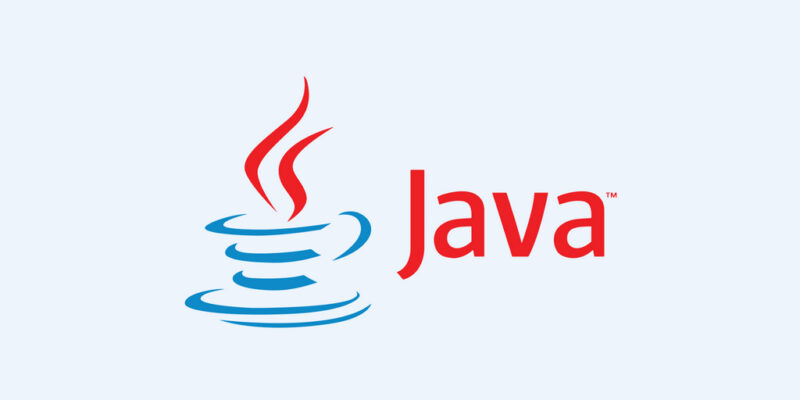Importance of Java Frameworks
Even in 2022, Java still boasts the world’s largest developer community. It also consistently appears on rankings of the most functional programming languages. More than 9 million Java developers contribute their skills and knowledge to the platform’s continued development. In addition, Java frameworks have aided Java’s growth to new heights.
Java developers don’t have to start from scratch when using these frameworks to build a comprehensive website or web application. So what is a Java framework, exactly? Let’s have a look.
What are Java Frameworks
Frameworks are commonly used for constructing websites and mobile apps. There are numerous frameworks available in Java. A Java framework accepts only Java code and syntax. Frameworks are frequently used to build websites and mobile apps. For backend web development, most developers utilize Java frameworks. We’ll go over ten of the most popular Java web framework in this article.
Let’s take a look at some of the best Java frameworks to learn in 2022 if you’re a Java developer or want to be one.
1. Spring Java Framework
Springs is indeed an open-source platform that any Java application can use. It solves the problem of tight coupling between modules by allowing for loose coupling, which means that changes in one class do not necessitate changes in other categories. Spring is a complete product in and of itself, as it includes capabilities like setup and security. Because it has a vibrant community, there is a wealth of information available about it on the internet.
2. Hibernate Java Framework
Hibernate is an Object-Relational Mapping (ORM) that simplifies database management in Java by reducing issues with JDBC, which does not enable object-level relationships, which is a fundamental idea in application development. HQL stands for Hibernate Query Language (Hibernate Query Language). It creates an abstraction layer that maps database tables to Java classes directly, allowing the code to be freely connected.
3. Struts Java framework
Apache Struts is an open-source development platform. By partitioning model, view, and controllers and connecting these three through to the struts-config.xml file, it follows MVC (Model-View-Controller), culminating in a convenient solution. Struts 1 and Struts 2 are the two variations. The improved version, Struts 2, is recommended by all businesses. It comes with several plugins that handle AJAX, REST, and JSON. Compared to standard MVC architecture, it is simple to set up and more adaptable. Therefore, it is an excellent option for web designers.
4. Google Web Toolkit, collection of tools created by Google (GWT)
Is it indispensable to speculate about who created the Google Web Toolkit? As the name suggests, it’s Google. GWT developed Google products such as AdSense, Blogger, and Google Wallet. The main reason Google Web Toolkit is deemed developer-friendly is that it simplifies Google APIs. It stands out from the crowd of Java frameworks since it can convert Java code into JavaScript code using a browser. It may be used to create beautiful internet Java apps.
5. Faces for JavaServer (JSF)
Oracle is the company that created JSF. It is a part of the Java Platform, Enterprise Edition, and thus a Java Community Process standard. JSF is a component-based UI framework that focuses on MVC design that allows developers to drag and drop UI components without having a comprehensive understanding of technologies such as Html, etc. It avoids the need for a new framework by allowing existing Java backend code to be enhanced with a web interface. Facelets is a templating framework for JSF. That enables interaction with AJAX-enabled components.
6. Dropwizard
The Dropwizard is a wizard; thus, “does exactly what it says on the tin” is appropriate. Because of its extensive support for monitoring, applications metrics, and complex customizations completes the application quickly. In addition, it combines many Java ecosystem libraries into a unified model. Finally, when all of Dropwizard’s features are combined, its explosive growth of RESTful APIs and assistance for prototyping make it magical.
7. Grails
Grails is a user-friendly game for beginners. It’s written in Groovy, a Java-based programming language. Groovy is a programming language similar to Java but has more features. Grails is an MVC-based framework that operates on the Java platform and is compatible with Java syntax. The rendering element of Grails is GSP (Groovy Server Pages), and GORM is the ORM implementation for it. What if we used a combination of Groovy and Java code? It’ll work perfectly. One of the advantages of Grails is that it allows us to combine Grails and Java code.
8. Vaadin
Vaadin is a whole new way of working because it takes care of client-server connections and routing, allowing you to focus solely on the presentation layer. It’s open-source, and its components can twist to build highly adaptable code. Vaadin’s UI components handle browser activity so that you can write your application entirely in Java. Vaadin is a cross-platform platform, which means you can port your code to a new platform.
9. Blade
The blade is an MVC-based full-stack web application framework that is lightweight. It works on a module-by-module basis, which aids debugging by breaking down an application into smaller chunks. The blade is a full-stack website development framework that works using JSON files.
10. Play
The Play framework prioritizes convention over customization. One of the unique features is that Play apps might write in Java and Scala. Play does not have to adhere to J2EE web standards. Space simplifies Maven to comply with the requirements and generates simple JAR files. IIntelliJIDEA and Dragonfly are both firms by Play. It has database engine access libraries built-in. It has a lot of features that make it popular among Java developers.
Conclusion
Many other Java frameworks, such as log4j for logging, Junit, and Selenium for testing, are not full-stack or website designing structures but are helpful in any application. These are important to know, but you can learn them on the fly together with the other frameworks listed above.
The optimal foundation for your app should match your company’s needs, have a particular amount of functionality and speed, and be simple to maintain and adapt to changes.








